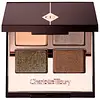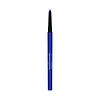What's inside
What's inside
 Key Ingredients
Key Ingredients

 Benefits
Benefits

 Concerns
Concerns

 Ingredients Side-by-side
Ingredients Side-by-side

Talc
AbrasiveMica
Cosmetic ColorantDimethicone
EmollientOctyldodecyl Stearoyl Stearate
EmollientZinc Stearate
Cosmetic ColorantZea Mays Starch
AbsorbentSilica
AbrasivePentaerythrityl Tetraisostearate
EmollientPotassium Sorbate
PreservativeChlorphenesin
AntimicrobialTetrasodium EDTA
Calcium Aluminum Borosilicate
Tin Oxide
AbrasiveCI 77891
Cosmetic ColorantIron Oxides
Calcium Sodium Borosilicate
Diisostearyl Malate
EmollientCaprylic/Capric Triglyceride
MaskingHydrogenated Castor Oil Hydroxystearate
Skin Conditioning1,2-Hexanediol
Skin ConditioningCaprylyl Glycol
EmollientTalc, Mica, Dimethicone, Octyldodecyl Stearoyl Stearate, Zinc Stearate, Zea Mays Starch, Silica, Pentaerythrityl Tetraisostearate, Potassium Sorbate, Chlorphenesin, Tetrasodium EDTA, Calcium Aluminum Borosilicate, Tin Oxide, CI 77891, Iron Oxides, Calcium Sodium Borosilicate, Diisostearyl Malate, Caprylic/Capric Triglyceride, Hydrogenated Castor Oil Hydroxystearate, 1,2-Hexanediol, Caprylyl Glycol
Isododecane
EmollientPolyethylene
AbrasiveSynthetic Wax
AbrasiveCalcium Sodium Borosilicate
Ethylene/Propylene Copolymer
AbrasiveBis-Diglyceryl Polyacyladipate-2
EmollientHydrogenated Polydicyclopentadiene
Polybutene
Silica
AbrasiveAloe Barbadensis Leaf Extract
EmollientCarthamus Tinctorius Seed Oil
MaskingPersea Gratissima Oil
Skin ConditioningPhytosterols
Skin ConditioningOlea Europaea Fruit Oil
MaskingTocopheryl Acetate
AntioxidantAscorbyl Palmitate
AntioxidantTin Oxide
AbrasivePentaerythrityl Tetra-Di-T-Butyl Hydroxyhydrocinnamate
AntioxidantOctyldodecanol
EmollientSynthetic Fluorphlogopite
Sorbitan Oleate
EmulsifyingMica
Cosmetic ColorantCI 77891
Cosmetic ColorantIron Oxides
CI 77510
Cosmetic ColorantIsododecane, Polyethylene, Synthetic Wax, Calcium Sodium Borosilicate, Ethylene/Propylene Copolymer, Bis-Diglyceryl Polyacyladipate-2, Hydrogenated Polydicyclopentadiene, Polybutene, Silica, Aloe Barbadensis Leaf Extract, Carthamus Tinctorius Seed Oil, Persea Gratissima Oil, Phytosterols, Olea Europaea Fruit Oil, Tocopheryl Acetate, Ascorbyl Palmitate, Tin Oxide, Pentaerythrityl Tetra-Di-T-Butyl Hydroxyhydrocinnamate, Octyldodecanol, Synthetic Fluorphlogopite, Sorbitan Oleate, Mica, CI 77891, Iron Oxides, CI 77510
 Reviews
Reviews

Ingredients Explained
These ingredients are found in both products.
Ingredients higher up in an ingredient list are typically present in a larger amount.
Calcium Sodium Borosilicate is a bulking agent. It is considered a borosilicate glass; it is composed of powder or flakes of calcium and sodium borosilicates.
This ingredient is used to add volume, shine, and color to products. You'll most likely find this ingredient in makeup products.
According to in-vivo and ex-vivo studies done by a manufacturer, this ingredient works well with UV filters:
Learn more about Calcium Sodium BorosilicateCi 77891 is a white pigment from Titanium dioxide. It is naturally found in minerals such as rutile and ilmenite.
It's main function is to add a white color to cosmetics. It can also be mixed with other colors to create different shades.
Ci 77891 is commonly found in sunscreens due to its ability to block UV rays.
Learn more about CI 77891Mica is a naturally occurring mineral used to add shimmer and color in cosmetics. It can also help improve the texture of a product or give it an opaque, white/silver color.
Serecite is the name for very fine but ragged grains of mica.
This ingredient is often coated with metal oxides like titanium dioxide. Trace amounts of heavy metals may be found in mica, but these metals are not harmful in our personal products.
Mica has been used since prehistoric times throughout the world. Ancient Egyptian, Indian, Greek, Roman, Aztec, and Chinese civilizations have used mica.
Learn more about MicaSilica, also known as silicon dioxide, is a naturally occurring mineral. It is used as a fine, spherical, and porous powder in cosmetics.
Though it has exfoliant properties, the function of silica varies depending on the product.
The unique structure of silica enhances the spreadability and adds smoothness, making it a great texture enhancer.
It is also used as an active carrier, emulsifier, and mattifier due to its ability to absorb excess oil.
In some products, tiny microneedles called spicules are made from silica or hydrolyzed sponge. When you rub them in, they lightly polish away dead skin layers and enhance the penetration of active ingredients.
Learn more about SilicaTin Oxide is an inorganic oxide used to add opacity and volume to a product. In nature, it is already found in mineral form. The main ore of tin is an opaque and shiny mineral called casseterite.
Tin Oxide helps remove translucency in a product, or make it more opaque. Besides adding opacity, tin oxide is used for bulking to add volume.
This ingredient is a combination of red, black, and yellow iron oxide pigments. This combination of colors is usually found in foundation, because it results in a "skin" color.